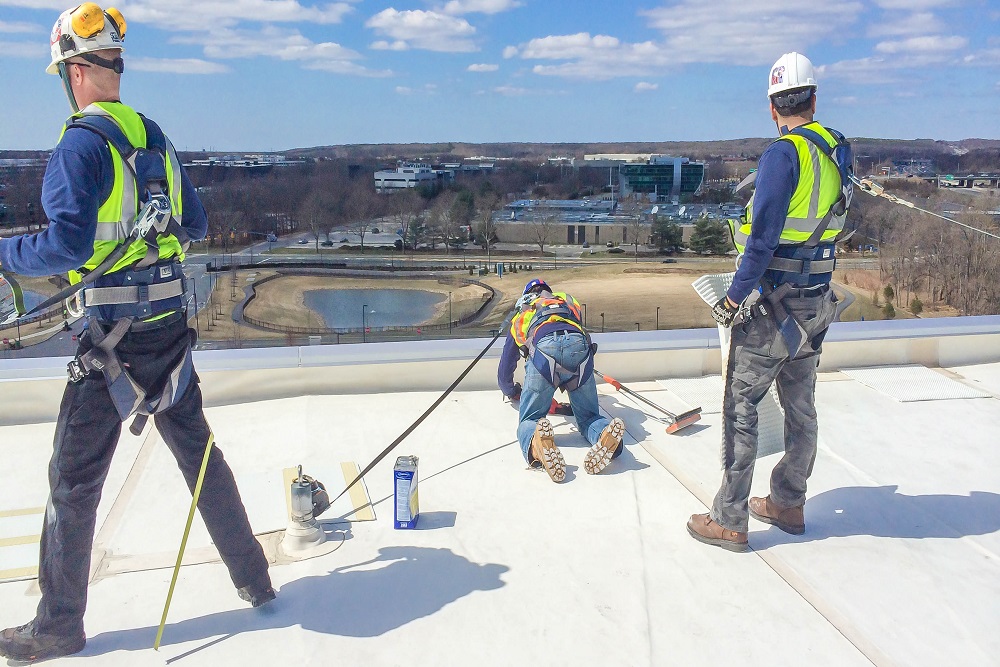
Introduction:
Working at heights comes with inherent risks, and ensuring the safety of your workers should be a top priority. One of the best ways to protect your employees from the dangers of falls is by implementing a 3M safety link fall protection system. This article will provide you with a comprehensive guide on how to properly set up and use such a system to minimize risks and keep your workers safe.
Ensuring Safety with a 3M Safety Link Fall Protection System
1. Understanding the Basics of a Fall Protection System
A fall protection system is designed to minimize the risk of injury or death resulting from a fall at height. The key components of a fall protection system include an anchor point, a safety harness, and a lanyard or lifeline. These components work together to arrest a fall and prevent the worker from hitting the ground or any objects below.
Fall protection systems can be divided into two main categories: fall arrest and fall restraint. Fall arrest systems are designed to stop a worker's fall after it has occurred, while fall restraint systems prevent workers from reaching a fall hazard in the first place. The 3M safety link fall protection system is a fall arrest system.
2. Components of a 3M Safety Link Fall Protection System
A 3M safety link fall protection system consists of several components that work together to ensure worker safety. These components include:
- Anchor points: Fixed points on a structure that can support the force of a falling worker, typically rated for at least 5,000 pounds.
- Safety harness: A full-body harness that distributes the force of a fall across the worker's body, minimizing injury.
- Lanyard or lifeline: A flexible line connecting the worker's harness to the anchor point, which absorbs some of the force of a fall and helps to arrest the fall.
- Horizontal lifeline: A cable or rope system that spans between two anchor points, allowing workers to move laterally while remaining connected to the fall protection system.
3. Choosing the Right Anchor Points
Selecting appropriate anchor points is crucial for the effectiveness of your fall protection system. Anchor points must be able to support the force of a falling worker, so they should be rated for at least 5,000 pounds of force per worker attached. Additionally, anchor points should be located above the worker's head to minimize the free fall distance and reduce the risk of injury.
When choosing anchor points, consider the following factors:
- The strength and stability of the structure to which the anchor point will be attached.
- The location of the anchor points relative to the worker's position and the fall hazard
- The type of work being performed and the duration of the work.
- The type of anchor point (temporary or permanent) and its compatibility with the structure
4. Selecting the Appropriate Safety Harness and Lanyard
Selecting the right safety harness and lanyard is essential for ensuring worker safety. A full-body harness should be used, as it distributes the force of a fall across the worker's body, minimizing injury. The harness should be properly adjusted to fit the worker comfortably and securely.
The lanyard or lifeline used should be designed to absorb some of the force of a fall, reducing the impact on the worker's body. Shock-absorbing lanyards or self-retracting lifelines are good options. The length of the lanyard should be chosen based on the working height and the distance from the anchor point to the fall hazard.
5. Installing a Horizontal Lifeline System
A horizontal lifeline system can be an effective solution for providing fall protection when workers need to move laterally along a structure. This system consists of a cable or rope that spans between two anchor points, allowing workers to remain connected to the fall protection system as they move.
Installing a horizontal lifeline system involves the following steps:
- Determine the appropriate location and spacing of anchor points
- Install the anchor points securely to the structure
- Attach the lifeline to the anchor points, ensuring it is properly tensioned and secured
- Connect workers' harnesses to the lifeline using a suitable lanyard or lifeline connector

6. Training Workers on Fall Protection and Proper Usage
Training is an essential aspect of ensuring worker safety when using a fall protection system. Workers should be trained on the following topics:
- The proper use and inspection of fall protection equipment
- The correct way to don and adjust a safety harness
- How to connect to a fall protection system and move safely while connected
- The importance of regular inspection and maintenance of fall protection equipment
- Procedures to follow in the event of a fall
7. Regular Maintenance and Inspection of the Fall Protection System
Regular maintenance and inspection of your fall protection system are critical to ensuring its effectiveness and the safety of your workers. Inspections should be conducted before each use and at least annually by a competent person.
During inspections, check for signs of wear, damage, or corrosion on all components of the system, including anchor points, safety harnesses, lanyards, and lifelines. Any equipment that shows signs of wear or damage should be removed from service and replaced.
Conclusion: Ensuring Worker Safety with a 3M Safety Link Fall Protection System
Implementing a 3M safety link fall protection system is a crucial step in ensuring the safety of your workers when working at heights. By selecting the appropriate components, installing them correctly, and providing adequate training, you can minimize the risks associated with working at heights and create a safer work environment. Regular maintenance and inspection of your fall protection system will help to ensure its continued effectiveness and the safety of your workers.







0 Comments